Every ten years, the U.S. government conducts the census, updating information on how many people live in the country, and locally how many people live in each city and town, and each neighborhood and building. Using that data, the federal, state, and local governments create new political districts, balancing the number of people in each to account for growth and shrinkage in different areas.
After voters passed Amendments Y and Z in 2018, boundaries for the congressional and legislative offices are now drawn by an independent commission. While little changed at the federal level for Denver, the state and local lines did shift, but because state legislative lines don’t cross county lines unless necessary, changes to the northwest corner of the city were slight. Some Chaffee Park, Sunnyside, and Highland residents who were in House District 4 (currently represented by Rep. Serena Gonzales-Gutierrez) are now in House District 5 (currently represented by Rep. Alex Valdez). Jefferson Park is shifting from District 5 to 4. While Senate District 34 (currently represented by Sen. Julie Gonzales) also shifted to no longer include parts of downtown Denver, there is no change to the senate district lines in Northwest Denver.
It’s not about who gets the zoo or who gets the stadium…it’s about people being represented.”
At the city level, redistricting is underway, and could include more substantive changes, or very few depending on how the process turns out. The city redistricting is also at the phase where officials are seeking community input. Unlike the state’s new independent commission process, the Denver City Council draws new district lines, and District 1 Councilwoman Amanda P. Sandoval is chairing the committee overseeing the process. Councilmembers and the community submitted maps, and councilmembers were able to sponsor maps for official consideration (their own or those created by community members). “It’s an honor to be the chair,” said Sandoval, noting that she believes she is the first woman councilmember to chair a redistricting process in Denver.
Denver Clerk and Recorder Paul Lopez’s office was responsible for creating new precincts—the smallest political boundary, which are generally smaller than a neighborhood. “I’m so proud of our team,” Lopez said in an interview, noting that his office completed their role two months early to give the council more time. Beyond that, his office isn’t involved with map creation, but as a former council member he shared some insight and recommendations. “We can’t be attached to the lines as is,” he said. “It’s not about who gets the zoo or who gets the stadium…it’s about people being represented.” He said council members should be open to lines changing and praised Councilwoman Sandoval’s efforts, saying she’s making the process more open and transparent than it has been previously.
One of those changes this time around was the public’s ability to access web-based mapping software at home, Sandoval explained. Previously, community members had to use one of two designated computers at the City and County building, limiting access. There are also more community meetings than in previous processes, and council hired a third party facilitator to run the community meetings rather than run them themselves.
Council members have sponsored a total of six maps, some of which could seriously alter North Denver’s representation, while others keep lines relatively the same.
Plan E, sponsored by Sandoval, keeps District 1 mostly intact, shifting the entirety of the West Colfax community into District 3 (currently it’s split between the two districts). It also shifts the area near Commons Park into District 1, but not Union Station. Sandoval said part of her goal was keeping what’s been historically called Denver’s Northside intact.
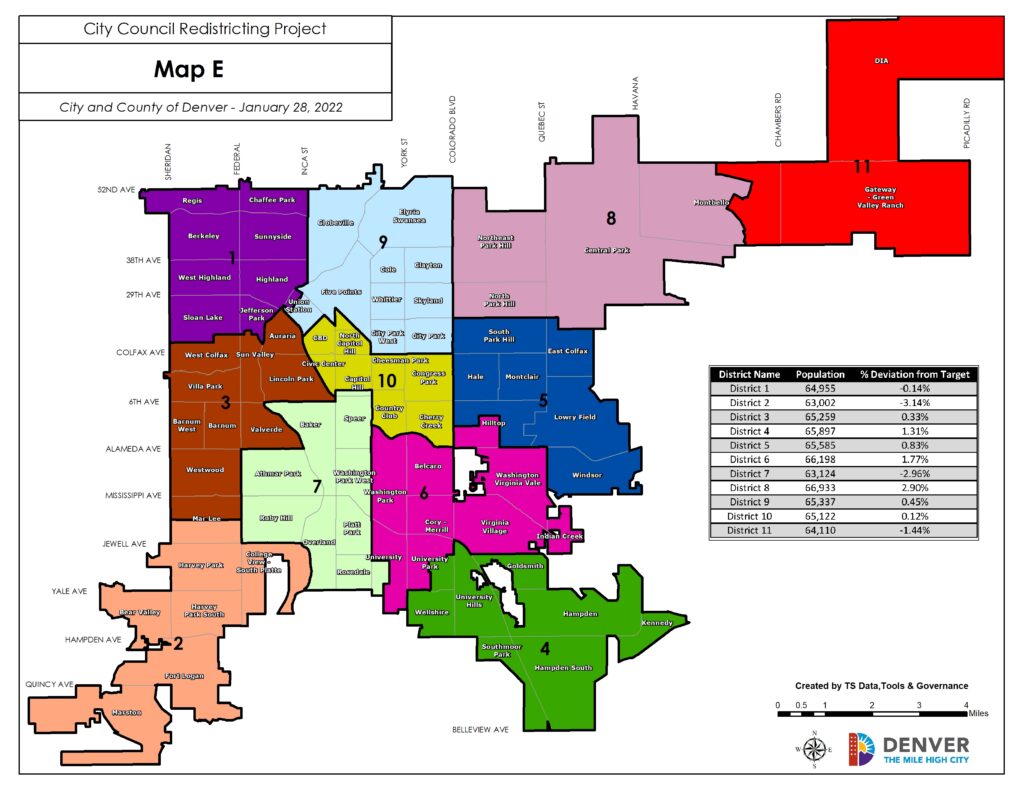
In contrast, plan A, sponsored by District 9 Councilwoman Candi CdeBaca, shifts Chaffee Park and part of Sunnyside into District 9, where they would join the Globeville, Elyria, and Swansea communities along with Whittier, Cole, and others near City Park. It would also move all of West Colfax into District 3.
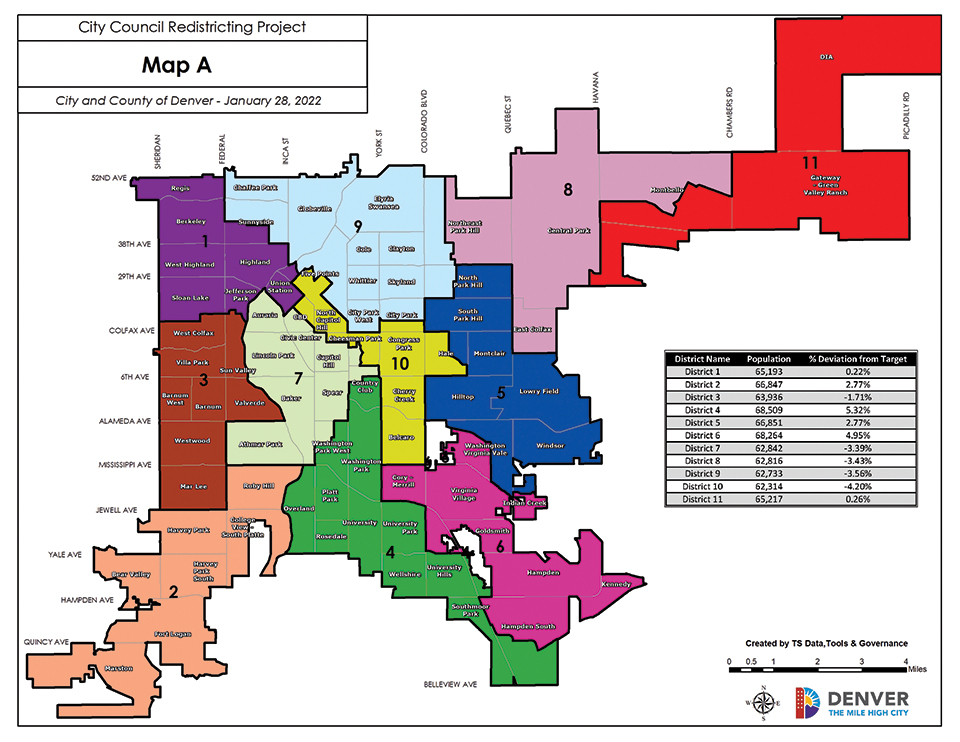
Plan F, submitted by District 4 Councilwoman Amanda Sawyer, would also shift the Chaffee Park neighborhood into District 9, but not Sunnyside. It would also move all of West Colfax into District 3.
Both A and F would involve District 1 picking up more of the area around Union Station.
Map B, submitted by District 3 Councilwoman Jamie Torres, would shift all of the area West of Federal and North of Colfax to District 1.
Map C, submitted by District 2 Councilman Kevin Flynn, would shift the West Colfax and Jefferson Park communities into District 3.
Council passed a resolution with guiding principles for the process, including ensuring as even of a population distribution as possible, respect for communities of interest, and the like. One point was slightly more controversial though: the decision to take current council members’ home addresses into account so they would not be drawn into the same districts if they run for reelection. That differs from the state process, which does not have a similar protection, which means two sitting legislators could end up in the same district if they run again. Councilwoman CdeBaca was critical of its inclusion and told The Denver North Star that it “made me really uncomfortable.” She said that because of that protection some districts might have to deprioritize other aspects when drawing the lines. Sandoval acknowledged that the point was more contentious, but said it was included because the majority of council members supported it. CdeBaca’s map does not take members’ current addresses into consideration, in line with her philosophy. It does place two current members in the same district if they run
for reelection.
At the first virtual public meeting on Feb. 2, the six sponsored maps were presented, which led several community members to express frustration that no maps authored by community members were included in the formal discussion. Several council members responded that they reviewed all the community maps when creating their own. The meeting had 74 attendees at its peak according to the city, with roughly a third of those being city staff members and elected officials, based on the government emails of registrants.
The city also scheduled meetings for Feb. 9, 12, and 15. If you’re interested in attending one of the final two meetings, the information is below. Council is anticipating a final vote on March 29.
You can view all council and community created maps, as well as more information, online at denvergov.org/redistricting.
Redistricting community meetings:
• Feb. 16, 5:30-7 p.m. Lake Middle School, 1820 Lowell Blvd.
• Feb 23, 5:30-7 p.m. Manual High School, 1700 E. 28th Ave.

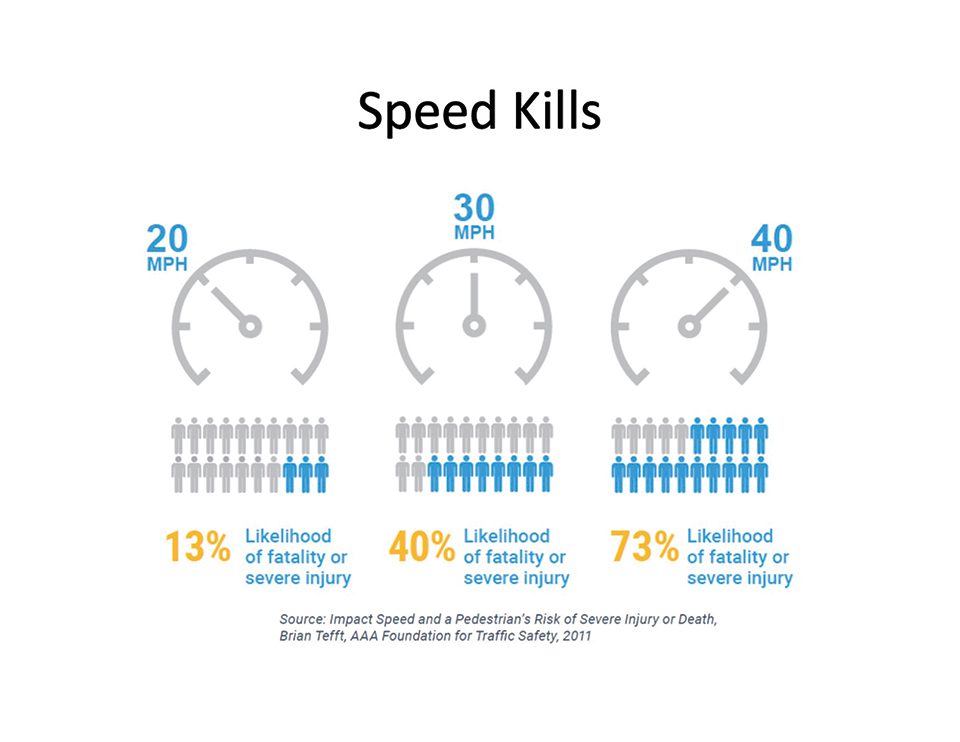
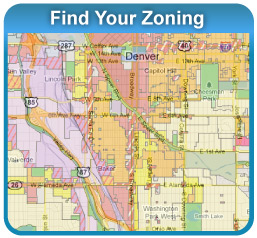
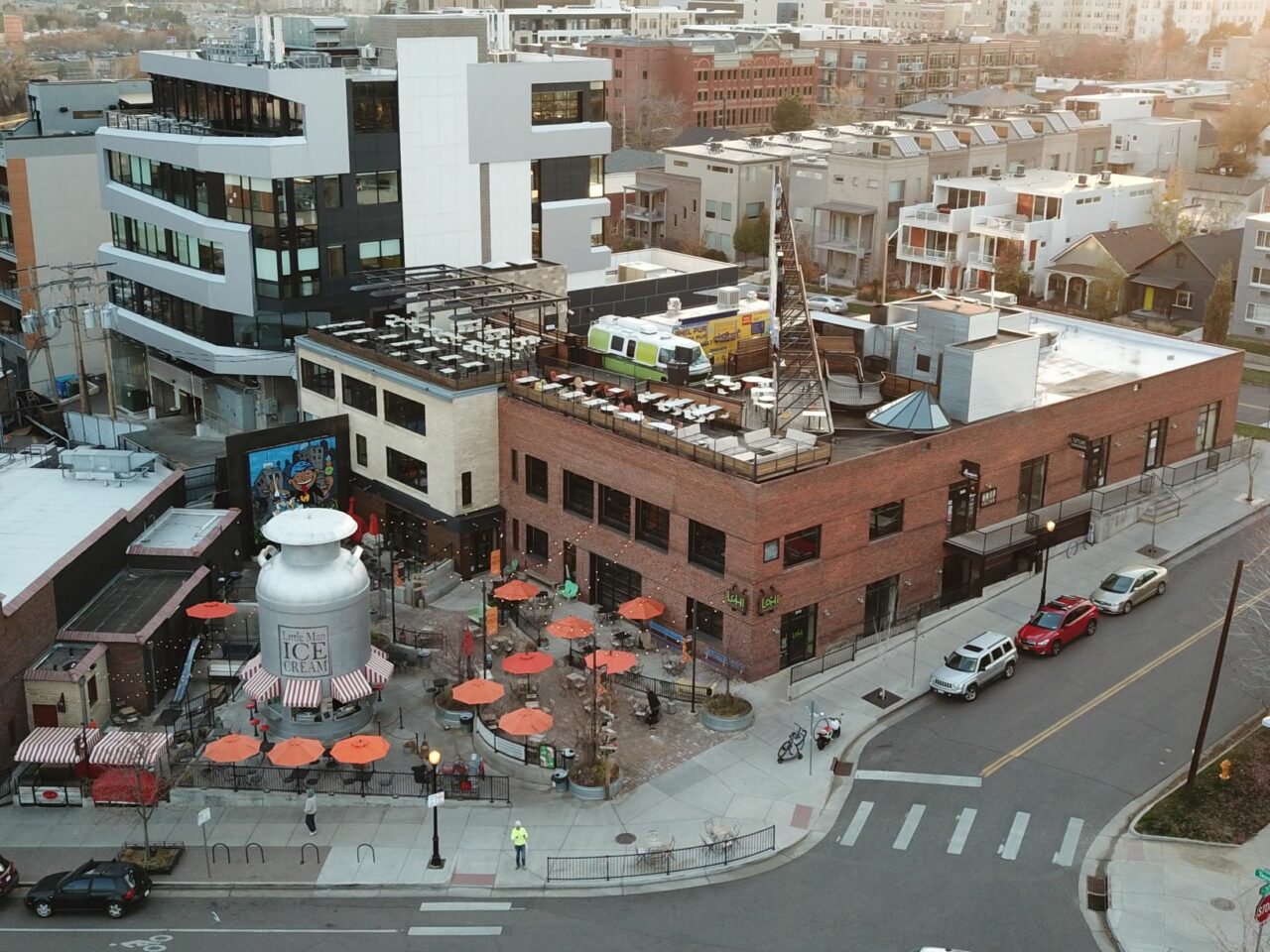
Be the first to comment